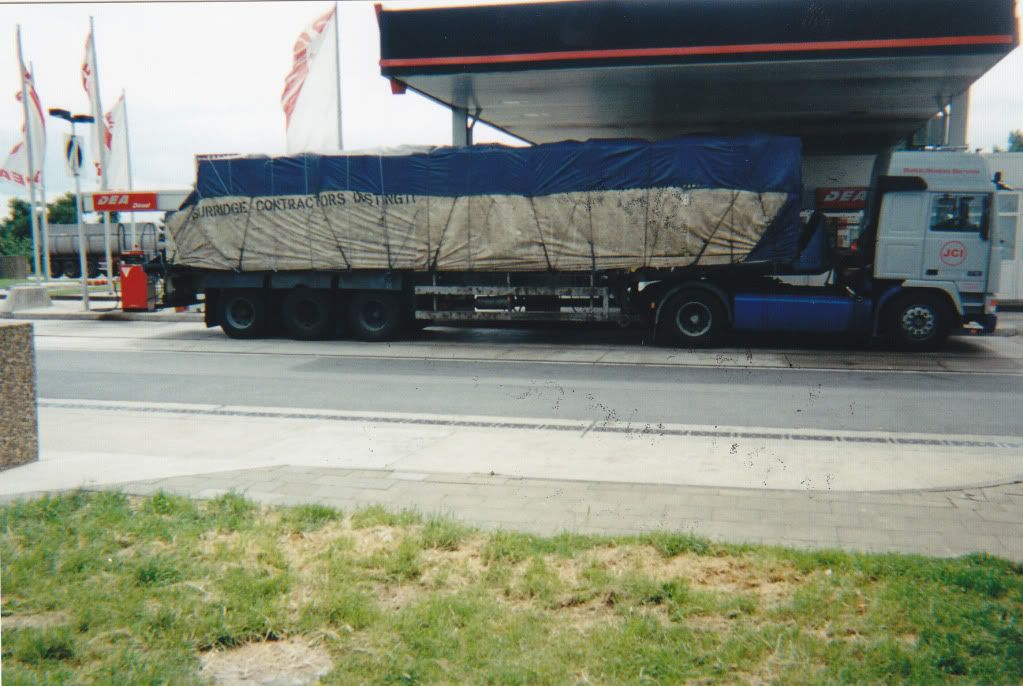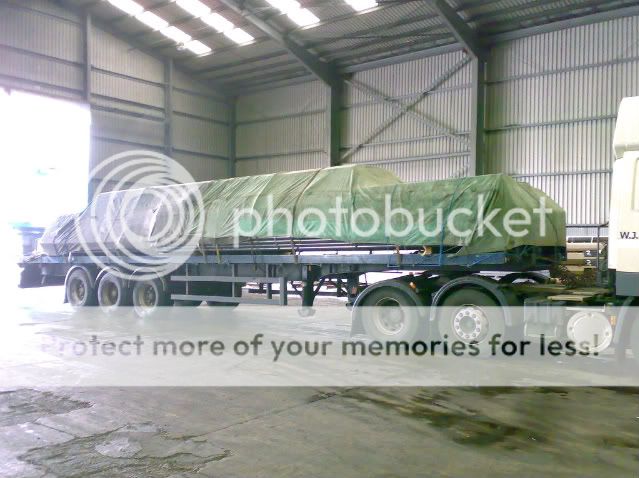K.Adams:
My sheeting is getting alot better
lucky this load I had a sheet with rope on
I am getting better but finding a decent sheet in our place or straps and rope is trying to find a needle in a haystack
OK K. Adams.
Seeing as you aren’t going to ask what I see wrong with this attempt at sheeting a load, I will tell you. As you have mentioned before, you haven’t done much in the way of sheeting and if that’s true, you haven’t done that bad.
Anyway, here goes. It’s too loose everywhere. You haven’t pulled it tight front to back or top to bottom or enveloped either end.
So for those that want an insight into sheeting a load properly.
When laying a sheet over a load like this, it’s put the back sheet on first. Unroll it along the top of the load and adjust it evenly. Making sure the sheet hangs over the sides at equal lengths. Pull enough of the sheet forwards or backwards to make sure the covering is enough to reach the trailer bed at the back but no more. Walk around the trailer pulling out all the little ropes caught up under the sheet, to save you having to find them and dig them out later. Starting at the front. Grab a corner of the sheet and start rolling it up until it is level with the trailer bed. Rap the attached rope around the rolled up part of the sheet using a half hitch. With the length of rope that is left, tie it temporarily, to a forward hook pulling it tight enough to take the weight but not enough to pull the sheet from the back. Do the same with both sides. Walk to the back of the sheet and grab hold of the bottom corner and roll it up again until it’s level with the bottom of the trailer bed again. With the rope that should be attached to the corner of the sheet you just rolled up, rap it around the rolled up part of the sheet and tie it off using another half hitch. With the rope that is left, cross it over the trailer, bringing the sheet with it ![]() and using dolly knot, stretch the sheet across the back of the load as tightly as possible. Do this on both sides of the load. Go back to the front of the sheet and using another dolly knot, stretch the sheet as far forward as poss’. If you look at the top of the load you will now see that pulling the sheet forward at the bottom only, it has rippled. If you want a tidy looking job and reduce the sheet flapping when travelling, it is important to re-adjust the top of the sheet at this point by climbing back on top of the trailer and pulling the top front of the sheet forward.
and using dolly knot, stretch the sheet across the back of the load as tightly as possible. Do this on both sides of the load. Go back to the front of the sheet and using another dolly knot, stretch the sheet as far forward as poss’. If you look at the top of the load you will now see that pulling the sheet forward at the bottom only, it has rippled. If you want a tidy looking job and reduce the sheet flapping when travelling, it is important to re-adjust the top of the sheet at this point by climbing back on top of the trailer and pulling the top front of the sheet forward.
Walk back to the rear of the trailer and dig out the “flap”. It is tucked away behind the mess left when crossing over the rear corners. Pull it out and tidy it up. You should be left with a piece of sheet resembling an envelope flap but square. Pinch the bottom corners of the flap and using the nearest, longest piece of rope you fished out earlier, tie a half hitch around the part of the sheet you pinched and pull it tight and tie it off using a dolly if poss’. Walk to the front of the sheet and pull the bottom front corners tight again. Work your way along both sides of the trailer pulling the sheet down as tightly as possible, tucking in any untidy areas but always leaving enough to cover the trailer bed/side. With all the little ropes, first rap each one around a trailer hook, using a half hitch, before diverting it through the eye in the triangular flaps shown in K. Adams’ photo’s and again using a dolly knot, stretch the sheet as tight as you can get it. Repeat the procedure with the front sheet.
When it comes to securing the load. Whether using ropes or straps, pull down and tuck between the trailer and rope/strap all the loose sheet you find created below the triangles when tightening down on them.
For those that are asking themselves, “why always start at the back”. It’s because if you put the front sheet on first, the back sheet will end up on top of the front sheet. With the back sheet being on the top, where the sheets overlap, the wind will easily lift the rear sheet. When your travelling along there is an umpteen mile an hour wind blowing strong enough to lift any sheet high enough for rain to enter and create all kinds of air pressure under the sheets, which in turn will eventually loosen all your ties and screw up your load. Not to mention increase fuel consumption.
If you have an uneven load, it is always best to complete the job with a fly sheet, if your boss isn’t too tight to supply them. And look out for any sharp edges or corners that could cut or rip the sheets. They will need to be packed out with any old rag or bits of cardboard box you can find.





